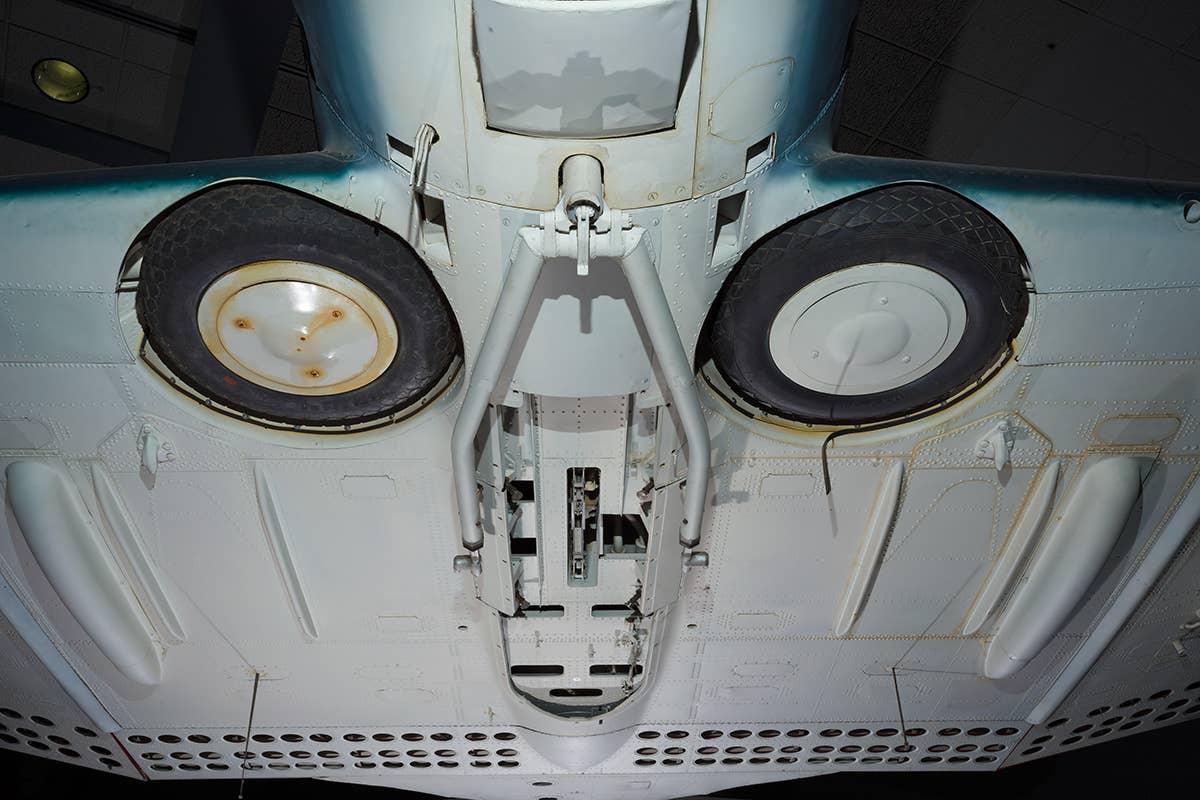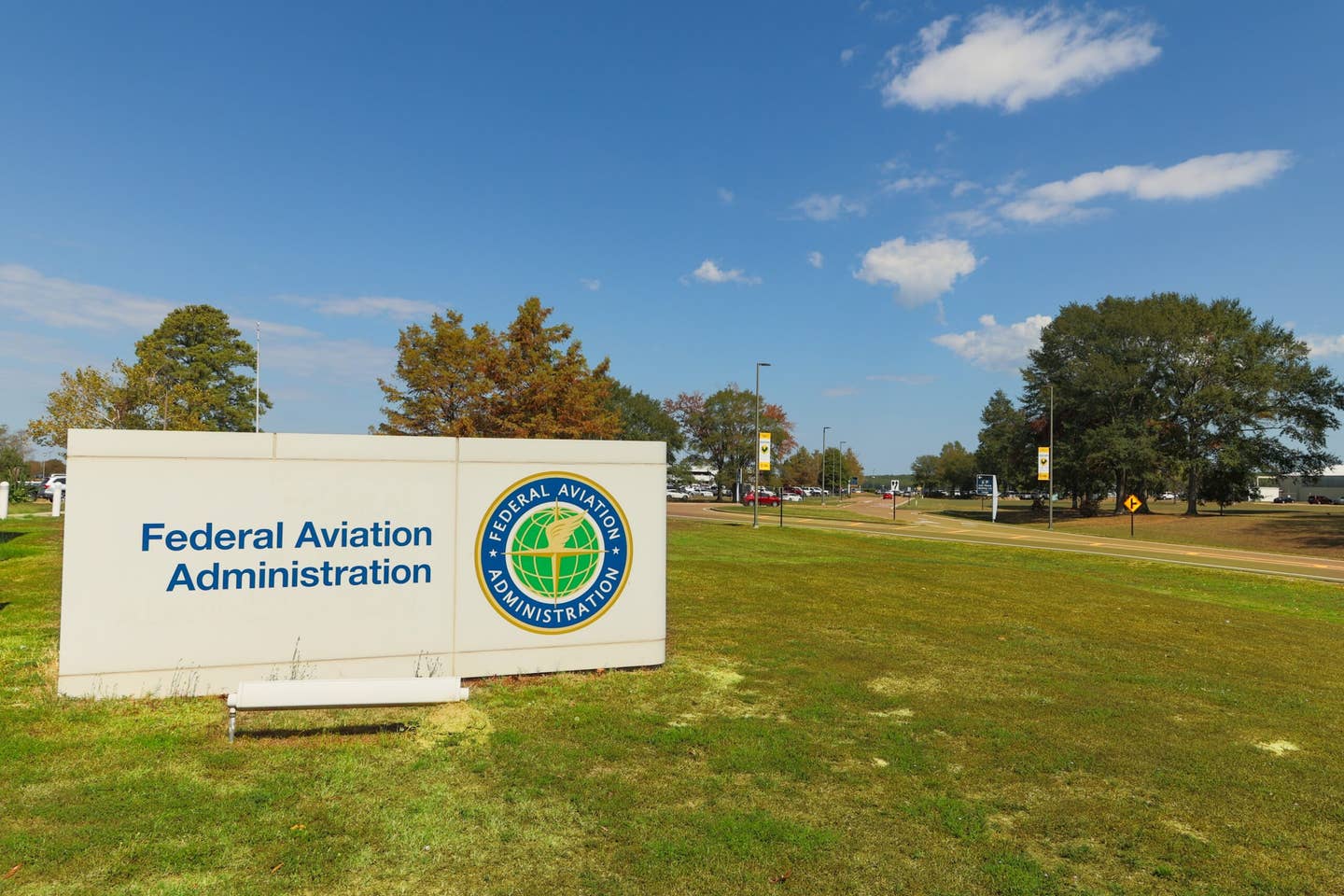How Well Do You Know Aircraft Landing Gear?
The care and keeping of landing gear is the baseline for any aircraft maintenance organization.

As with everything airplane-related, the topic of landing gear maintenance ranges from simple to extreme. [SBD-6 Dauntless Photo Courtesy: Smithsonian Institution]
It starts at about 5 o’clock, just after quitting time for most businesses. People wander into the hangar, making small talk and eyeing the tables along the wall. Some have a small covered dish, maybe a bag of chips, and others carry coolers. Kids play cornhole on the grass beside the building, and someone produces a Bluetooth speaker for tunes.
“Tuesday Evening Wing Night” at Tailwheel Alley is a time-honored tradition at Georgia’s Newnan-Coweta County Airport (KCCO). Several aircraft, such as a Pitts, a Christen Eagle, a Citabria—and others—populate the ramp. Perhaps someone will take one around the pattern, or they just like showing off. Pilots kick tires, boast about maneuvers, and enjoy good-natured ribbing. Someone fires up an engine, and all heads turn in unison.
What is it about this collection of aircraft that is so special? It is printed proudly on the side of the hangar, Tailwheel Alley. There is an old airport expression that says you haven’t stopped flying a taildragger until it is chocked in the hangar with closed doors. As you can imagine, there is no shortage of strong feelings on either side of the fence, but before one can understand the nuances of a taildragger, one must first understand aircraft landing gear. Shall we begin?
Landing Gear Types
When we first began our Maintaining Your Airplane journey, I introduced you to the FAA advisory circular (AC) 43.13-1B, “Acceptable Methods, Techniques, and Practices - Aircraft Inspection and Repair.” This AC is a great resource and starting point for aircraft maintenance-related questions. It may not give you everything you need to complete the task, but it will get you off on the right foot.
I believe the question was, what are the different types of aircraft landing gear? The AC43.13-1B contents page gives us the reference we are looking for, Chapter 9, Aircraft Systems and Components, Section 1, Inspection and Maintenance of Landing Gear. The publication begins in 9-1 General by describing the two main categories of aircraft landing gear: fixed and retractable. The fixed gear is the more basic and outfitted with wheels, floats, or skis. Amphibian aircraft can also have a combination of floats and wheels. In 1911 the amphibious Glen Curtiss’ Triad airplane had retractable gear. (I’ll bet you a nickel that you didn’t know that.)
Aircraft are configured as conventional (tailwheel) and tricycle, which also includes tandem on larger aircraft. Each can be fixed or retractable; fixed gear may or may not deploy fairings to improve aerodynamics. Electric or hydraulic power actuates retractable gear. In emergencies, the landing gear can be hand-activated with a lever in the cockpit or blown down by injecting stored nitrogen into the actuator cylinders. (Whoa, that must be intense.) The AC43.13 refers to tricycle gear as nosewheel-type aircraft, and they explain calculating the empty weight center of gravity formulas for each in Figure 10-4.
Components
Each Maintaining Your Airplane article builds on a previous piece. Earlier, we introduced the Airline Transport Association (ATA) 100 Code Table and described how each number assigned represented a section of the airplane. As you will recall, ATA 32 is Landing Gear, and each subsequent sub-section denotes a different component of the landing gear system. We mentioned wheel fairings earlier; 3201 addresses those parts. Are you maintaining an aircraft with floats? Then 3246 is where you want to be.
The ATA numbering system also provides a uniform system of controls for Technical Publications (TechPubs). For example, the Beechcraft King Air B200 Illustrated Parts Catalog (IPC) references ATA 32-10-00-13 for the King Air Standard Main Landing Gear Doors. Here you will find the part number for the Standard Main Landing Gear Door, 101-810015-1. The B200 has two landing gear options. Spend some time in this IPC, and you will see references to “Flotation.” This description does not indicate an amphibian configuration but a taller, more substantial landing gear option designed for unimproved runways and remote airfields.
Other components classified under ATA 32 include, but are not limited to, actuation, wheels, brakes, anti-skid, tires, steering, and landing gear system wiring.
Landing Gear Maintenance
Aircraft are most vulnerable during takeoff and landing. We have all heard the stories of landing gear failures during both. The care and keeping of landing gear is the baseline for any aircraft maintenance organization. Everyone knows that powerplants and avionics panels get all the press, but the landing gear is where the rubber meets the runway. (Yeah, sorry about that; I could not resist.) As with everything airplane-related, the topic of landing gear maintenance ranges from simple to extreme, and lands on all points in between. (I did it again.)
You know the rules; always reference the OEM guidelines for maintaining aircraft and components. That said, there are also supplemental sources of information that can be pretty handy when getting familiar with your equipment. Again, head back to the AC43.13, consult section 9.2, General Inspection, and work down through 9-3, Cleaning and Lubricating, before getting into specific types with 9-4, Fixed-Gear Inspection, and 9-5, Inspection of Retractable Gear.
I could talk about this all day, but we would quickly run out of space. By now, you should all have a copy of the AC bookmarked and should have no trouble digging in. We also need to highlight 9-12, Retraction Tests, known on the hangar floor as “swinging the gear.” This action requires someone in the cockpit to actuate the landing gear handle while others on the ground observe the movement and travel of the gear. Look for binding linkage, improperly rigged doors, and leaks.
When working in the cockpit, awareness of your surroundings is essential. A lot is going on there, and you could get into trouble if you are not careful. One way to broaden your horizon and get better acquainted with the specific equipment you maintain is to cross-train and consult TechPubs that fall outside the maintenance realm. One such publication is Flight Safety International’s Super King Air 200/B200 Pilot Training Manual. In Chapter 14, they address Landing Gear and Brakes. This guide has an excellent description of the Landing Gear Control mechanism and indication lights. Remember, we are looking for three green down and locked!
Our friends at the American Bonanza Society have a Landing Gear Inspection checklist that is worth a look. Again, these documents are for training and reference purposes only. Some of this is tribal knowledge and most likely obtained the hard way. Again, always consult the OEM maintenance manual when performing the maintenance action, operationally testing, and returning the component to service.
Proper maintenance means proper tooling. Improper tools and working with substandard equipment could result in questionable maintenance, property damage, or personal injury. Often having the right tool for the job can be the differentiator between success and failure. When possible, seek specialty tool manufacturers like Tronair and consult them when setting up your hangar.
Landing Gear Intel
I spent some time this week with Robert Bial, founding partner of Forefront Aerospace Services. Bial spent 15 years as president of Professional Aircraft Accessories, leading the company to become the market leader in aftermarket landing gear and component overhaul services. We discussed the finer points of landing gear maintenance, and he offered some great intel.
FLYING: What are some things to consider when maintaining landing gear on aircraft such as King Air?
Robert Bial (RB): Beechcraft requires the King Air landing gear inspections every 8,000 flight hours or every six years. The shop disassembles the gear and strips the paint, then performs all necessary non-destructive inspections (NDIs).
They inspect the cylinders for scoring to the chrome tube. If found, the component may need to be repaired or replaced. Once complete, a technician paints the gear and performs a service/leak check. Before returning to service, an inspector reviews the wiring, lights, drag braces, actuators, and shimmy damper.
FLYING: What conditions would cause the rejection of landing gear components?
RB: It is common to see corrosion in the landing gear and sub-components. Exposure to the elements is often the cause. Inspecting for dissimilar metal corrosion where aluminum components meet steel bushings is essential. If caught in time, replacement or seals, bearings, and bushing may be all that is needed.
FLYING: Explain to our readers what to look for when partnering with a landing gear MRO.
RB: When selecting a repair facility to perform your next inspection or overhaul, experience is vital. Find a shop with the personnel and background to ensure a quality overhaul while offering the best value and turnaround time. Ensure they hold a Part 145 certification. Have they approved alternate DER repairs and PMA parts to save time and money and improve reliability? With supply chain issues making headlines, it is good to have another approved supply source.
There you have it, real-world advice you can carry in your toolbox. ATA 32 is more than just the sticks under the airplane; we will have to wait until next time to break down the rest of the system. Until then, keep the rubber side down, unless you are like my buddies at Tailwheel Alley and like to roll over Beethoven in an airplane.

Sign-up for newsletters & special offers!
Get the latest FLYING stories & special offers delivered directly to your inbox






